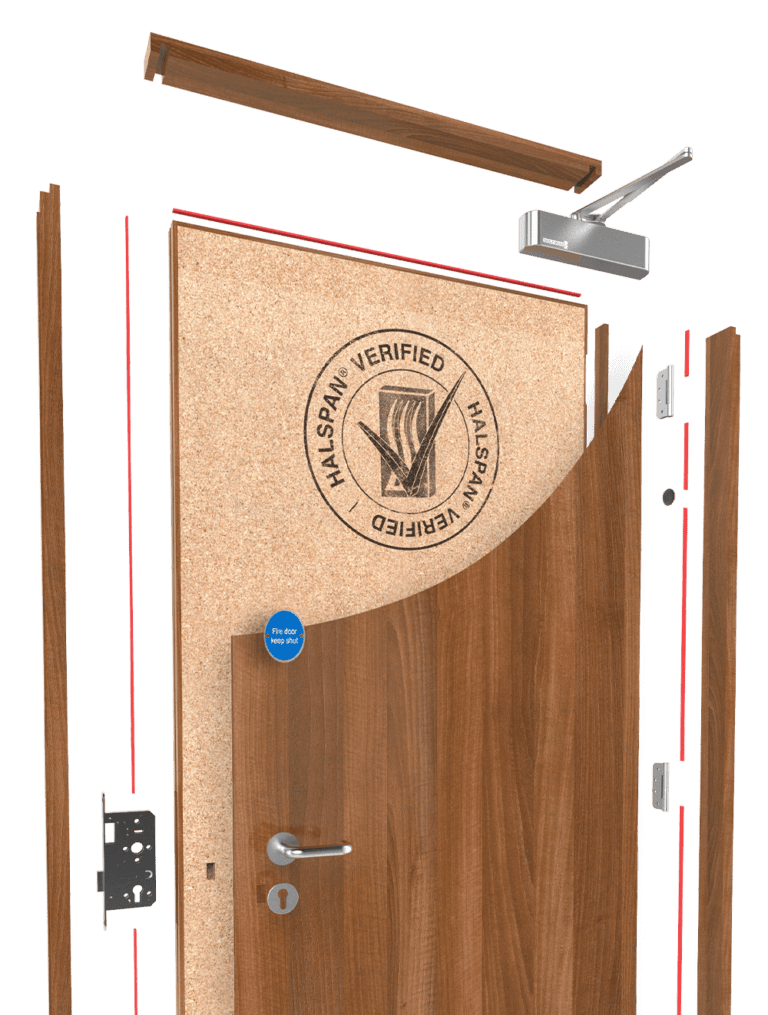Managing the transition from BS 476 Part 22 to EN 1634-1: Impacts on Fire Door Testing
- techweb64
- Nov 20, 2024
- 5 min read
Updated: Mar 6
This shift has been a topic of discussion for nearly two decades with an aim to ensure that fire testing results would be comparable regardless of where the tests were conducted across Europe
BS 476 Part 22 and EN 1634-1 are both standards related to fire resistance testing, but they differ significantly in scope, methodology, and application.
BS 476 Part 22
This standard primarily addresses the fire resistance of non-loadbearing elements of construction, such as partitions, ceilings, and doors.
It measures how these elements perform under fire exposure, focusing on criteria like integrity, insulation, and stability over a specified duration.
It is a British Standard, used mainly in the UK, and has been part of the UK building regulations for many years.
EN 1634-1
EN 1634-1 specifically relates to the fire resistance of doors, shutters, and glazing. It provides a more comprehensive framework for testing various door types.
This standard employs a more standardized testing approach across Europe, allowing for consistent results regardless of the testing location. It includes specific criteria for performance under fire conditions, assessing integrity and insulation.
EN 1634-1 is a European standard applicable across EU member states and other countries that recognize European standards.
In summary, BS 476 Part 22 is focused on a broader range of non-loadbearing construction elements in the UK, while EN 1634-1 is more specialised, specifically addressing fire resistance for doors and similar elements with a standardised approach applicable across Europe. The transition from BS 476 Part 22 to EN 1634-1 represents a move towards harmonisation in fire safety testing within the European framework
A Long-Standing Discussion
The initial development of EN 1634-1 focused on creating a consistent framework for testing fire resistance, integrating features like plate thermocouples and pressure neutral axis reductions. These innovations were intended to facilitate uniform testing outcomes in various countries, including Germany, France and Belgium. However, challenges in achieving true consistency have persisted, with differences in furnace types (oil and gas) and sizes complicating the testing process. In addition, the dissemination of the information by translation to different European languages proved tricky,
Now in 2024, the UK Government has confirmed that BS 476 Part 22 will be removed from the building regulations, including the Approved Document B (ADB). A five-year transition period is now in effect, prompting a significant re-evaluation of fire safety practices, particularly in fire door testing.
Implications for the Industry
The implications of this transition are profound, especially regarding fire door testing. The shift to EN 1634-1 will increase demand for testing services, straining the already busy notified laboratories in the UK that are approved to conduct these tests.
As the industry gears up for this change, the scramble for relevant data and sourcing testing capacity has already begun.
This move has been influenced by findings from the Grenfell Tower inquiry, which highlighted critical flaws in how the construction sector manages fire safety information. The Government is eager to establish a standardised database for testing and assessments to improve compliance and safety.
The notion that you could have a desktop assessment from a number of bodies which would be based on the same database of testing, and the assessment could contain different parameters, was intriguing to the Government and possibly a concern to them and our industry.
It was a feature that we knew about and Halspan tried to steer a path where we could provide documentation that we’re happy with even if it may conflict with some of the conclusions drawn by the assessment houses.
The UK Government doesn’t regard the word assessment and so the development of the ‘Extended Field of Application’ has come about.
The Importance of Extended Applications (EXAP)
Fields Of Application can be produced as a byproduct of the testing to EN 1634-1 as a direct Field of Application, and then can draw upon a suite of tests to have that scope extended into an Extended Field Of Application or EXAP. This is the nature of the topography that we see going forward.
As the transition progresses, the demand for EXAPs will likely increase. Companies will race to validate their products under the new standard, as designers and architects increasingly favour what they perceive as a more rigorous testing approach. This shift may lead to a gradual decline in the relevance of BS 476 Part 22 as the industry adapts.
So, we’re going to have a period where the market will be undersubscribed as far as testing facilities availability and the production of the output documents is concerned.
The period of transition is five years. We think the market will close in ahead of that.
Navigating Challenges and Seizing Opportunities
The transition to EN 1634-1 presents several challenges, including potential shortages in testing capacity and a period of market disarray as stakeholders adjust.
The culture within the industry will be interesting because certain sectors of our industry don’t understand BS476 part 22 technology, what you can and can’t do with it, nor how it’s presented.
That goes back to 1987 so it doesn’t bode well for some.
However, for well-prepared manufacturers, opportunities abound. Companies like Halspan, which have invested in comprehensive testing to EN 1634-1, are in a strong position to assist clients navigating the new requirements.
We’ve got relevant and appropriate data allowing production of our own EXAP documents.
The development of these robust EXAP documents will not only support UK customers but also aid European clients needing compliance with EN 1634-1.
Future-Proofing Fire Safety Products
To thrive in this evolving landscape, manufacturers must ensure their products, whether that be mainstream or niche, are future proofed for compliance with the new standards. Continuous investment in research and development will be essential for maintaining a competitive edge and meeting regulatory requirements.
Halspan, for instance, is committed to retaining its BS 476 Part 22 scopes and certifications while simultaneously preparing for EN 1634-1 compliance. This dual approach will entail additional costs, but long-term strategic budgeting for R&D will help mitigate the impact of these changes.
Conclusion
As the UK transitions to EN 1634-1, the shift from BS 476 Part 22 represents both challenges and opportunities for the fire door testing landscape. By proactively preparing for these changes and investing in rigorous testing and compliance measures, manufacturers can navigate this transition successfully. Stakeholders are encouraged to stay informed and engaged with ongoing developments to ensure fire safety remains a paramount concern in building design and construction.
To find out more about EN1634-1 and its impact on fire door testing, please get in touch with our team at technical@halspan.com.





